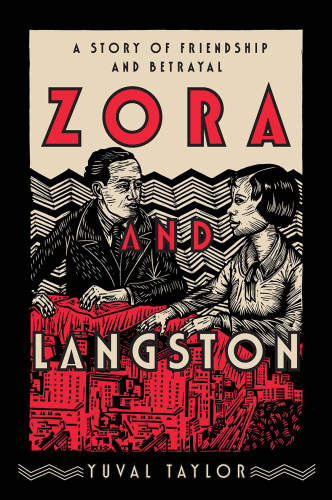
Zora and Langston
A Story of Friendship and Betrayal
کتاب های مرتبط
- اطلاعات
- نقد و بررسی
- دیدگاه کاربران
نقد و بررسی

January 1, 2019
The tale of a famous literary friendship that ended in bitterness.Zora Neale Hurston (1891-1960) and Langston Hughes (1901-1967) were major figures of the Harlem Renaissance and, for several years, collaborators and loving friends. Taylor (co-author: Darkest America: Black Minstrelsy from Slavery to Hip-Hop, 2012, etc.), senior editor at the Chicago Review Press, places their friendship at the center of a revealing examination of the alliances, betrayals, rivalries, and aspirations that characterized the African-American literary and arts world in the 1920s and beyond. In 1926, Hurston bestowed the nickname "Niggerati" on the many young writers and artists, "opposed to the literary conventions of the older generation of the black elite," who gathered in Manhattan for social and literary activities. They were supported--sometimes with publicity, sometimes financially--by admiring white New Yorkers Hurston called "Negrotarians," including Carl Van Vechten, Hart Crane, Muriel Draper, Max Eastman, Eugene O'Neill, George Gershwin, and H.L. Mencken. Foremost among them was Charlotte Mason, an heiress who inherited her husband's vast wealth after his death in 1905. Among her passions were parapsychology, psychic healing, and African-Americans and Indians, who she believed were unsullied by "the ills of civilization" and possessed of "primitive creativity and spirituality [that] would energize and renew America." A major collector of African art, she disdained white culture, declaring herself "eternally black." In 1927, she decided to become a personal patron to many figures of the Niggerati. She must be called Godmother, she insisted, and demanded nothing less than complete filial devotion in exchange for monthly stipends of $150 (for Hughes) and $200 (for Hurston) to allow them to pursue their work. Mason, Taylor writes, was "a jealous god, controlling and wrathful," dictating what kind of projects her "children" pursued and, in Hurston's case, prohibiting her from showing her writing to anyone without Mason's consent. Drawing on published and archival sources, Taylor creates a perceptive portrait of the bizarre patron and of the Hurston-Hughes friendship.A fresh look at two important writers of the 1920s.
COPYRIGHT(2019) Kirkus Reviews, ALL RIGHTS RESERVED.

February 15, 2019
Fascinating in their own rights as major literary figures, Langston Hughes and Zora Neale Hurston are also fascinating for their complicated relationship, which ended in a spectacular clash. They met in New York and became key members of the Harlem Renaissance. She was from rural Florida, adept at capturing the folk culture of common people. He was from a more complex background of privilege and struggle, well-regarded for his penetrating poetry. Both wrestled with the complexities of African American culture and the meaning of authenticity at a time of racist stereotypes. In the midst of it all was Charlotte Osgood Mason, a wealthy white woman who supported and sought to control Hughes, Hurston, and other artists and writers. Deeply dependent on Mason, Hughes and Hurston struggled to be true to themselves as individuals and artists. They defied her by attempting to write a play together, a project that would ultimately tear apart their friendship. Taylor (Darkest America, 2012) has created an intimate portrait of two luminaries of American literature against a backdrop of the cultural, political, and economic forces that influenced them.(Reprinted with permission of Booklist, copyright 2019, American Library Association.)

February 1, 2019
Zora Neale Hurston (1891-1960) and Langston Hughes (1902-67) were not only literary luminaries but also best friends. They shared a vision of black art and identity, and traveled and worked together. Their brief companionship lasted from 1925 until a dramatic falling out in 1931. Taylor (senior editor, Chicago Review Press; coauthor Faking It;$SPACE$Darkest America) is the first to explore their relationship at length and in-depth. The catalyst for its end was a play Hughes and Hurston collaborated on against the wishes of their mutual benefactor, Charlotte Mason. Added to the threat of losing financial support was Hurston's jealousy of Hughes's deepening relationship with Mason's secretary, Louise Thompson. Mix in misunderstandings, crossed letters, and meddling friends and the result is a bitter conclusion to a once dynamic closeness. VERDICT Taylor provides so much background for Hughes and Hurston as individuals that the details of their friendship sometimes get lost. However, one does not need to know much about the pair in order to enjoy this account, which is likely to appeal to their fans who have not read comprehensive biographies of either author.--Stefanie Hollmichel, Univ. of St. Thomas Law Lib., Minneapolis
Copyright 2019 Library Journal, LLC Used with permission.

























دیدگاه کاربران